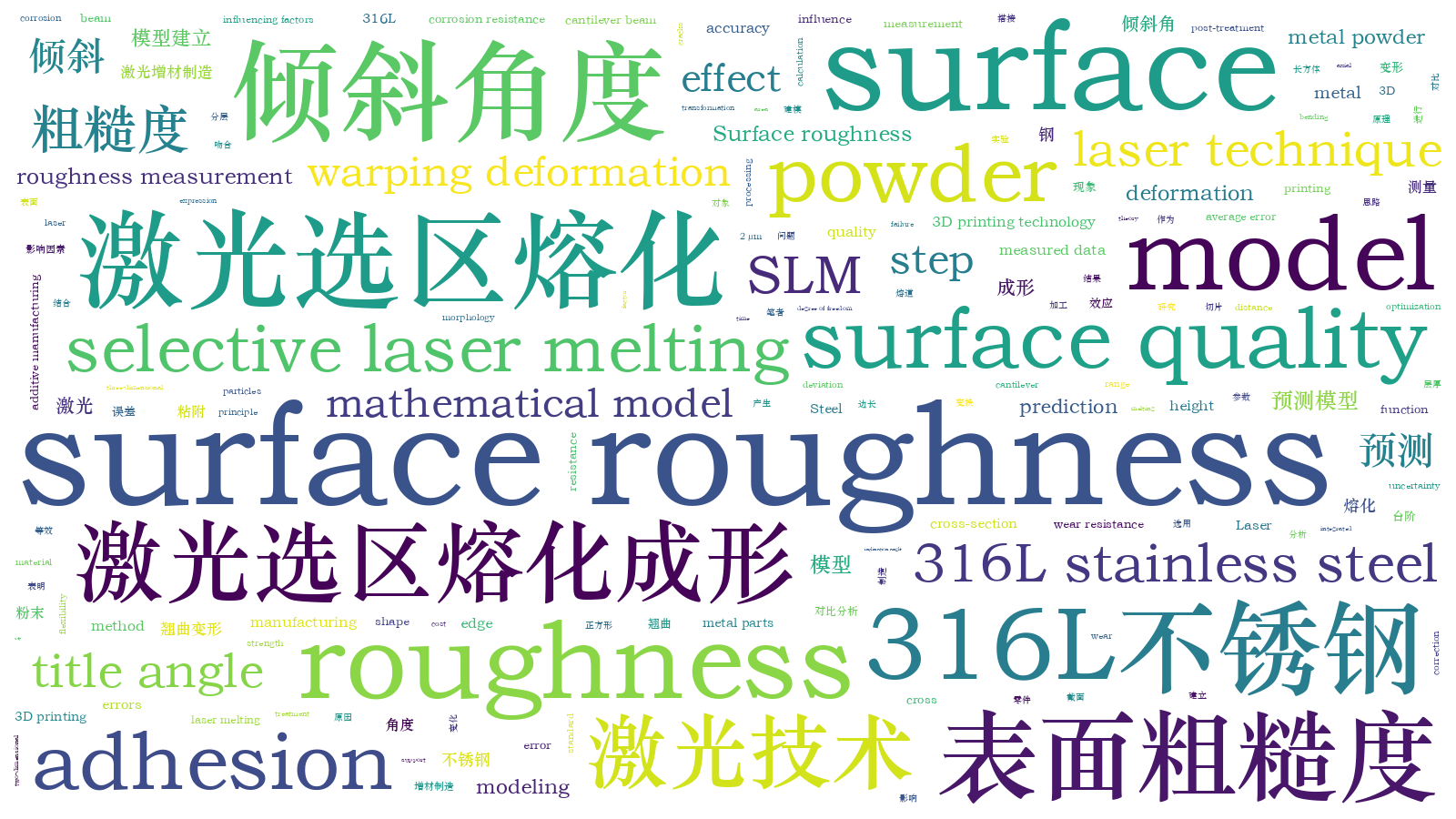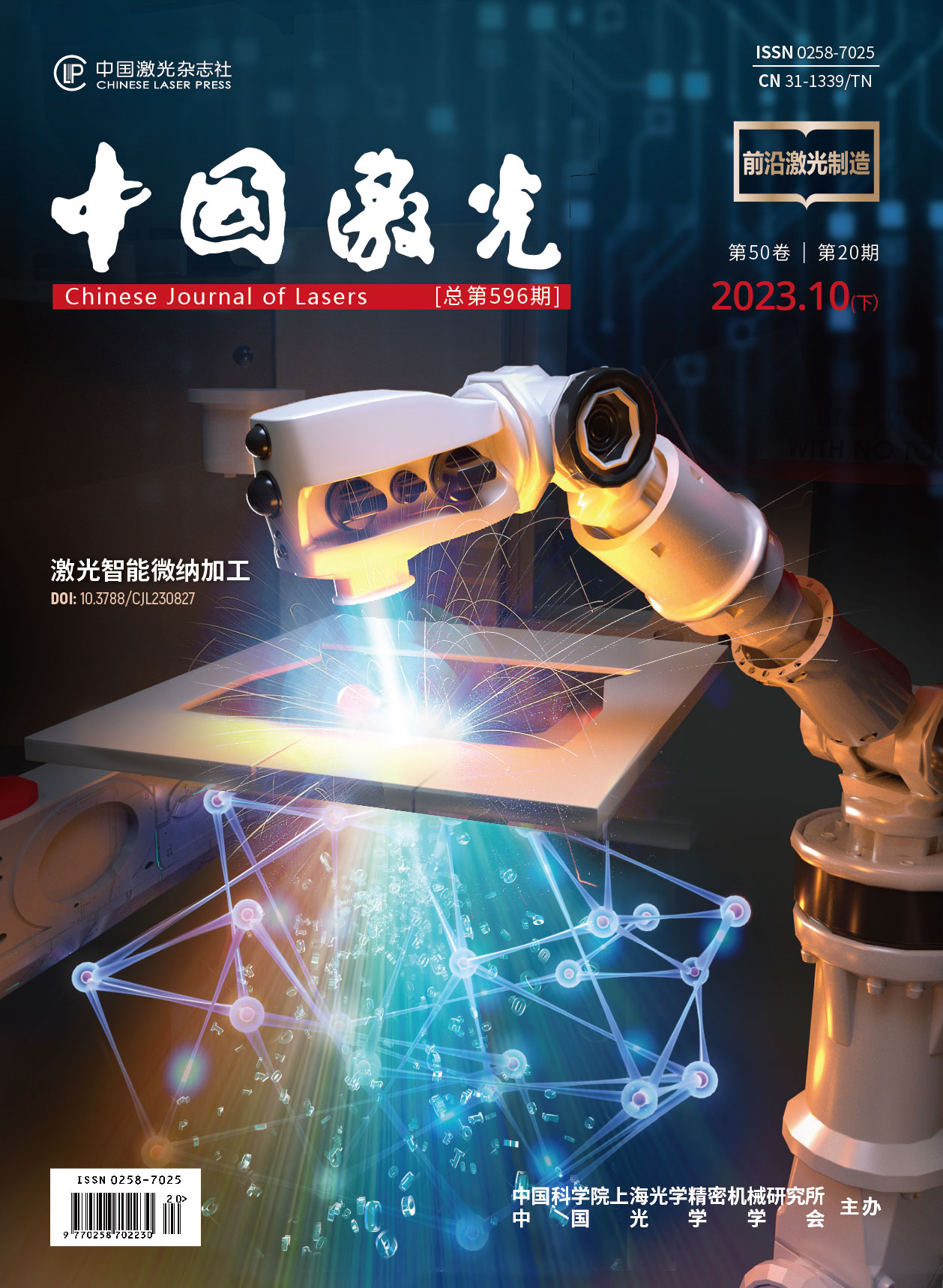激光选区熔化成形316L不锈钢下倾斜面粗糙度的预测与模型建立【增强内容出版】
Selective laser melting (SLM) is a metal-additive 3D printing technology based on layer-by-layer printing. It is one of the most promising industrial additive manufacturing technologies for manufacturing metal components. SLM has the advantages of a high degree of freedom and high material utilization; however, the available surface roughness limits the industrial implementation of this technology. Surface roughness refers to the unevenness of the machined part surface with small spacing, small peaks, and valleys: the distance between two peaks or valleys is very small and belongs to the microgeometric shape error. The Ra value of the parts prepared via SLM is usually between 10 and 30 μm; surface roughness is an important indicator of surface quality, and good surface roughness is widely needed to avoid premature failure caused by surface-induced cracks. Poor surface quality not only reduces the strength, wear resistance, and corrosion resistance of the parts, but also affects the accuracy of corresponding processed parts. Excessive surface roughness can directly lead to an inability to meet assembly conditions, usually requiring surface post-treatment, which takes a significant amount of time and operational cost accumulation, reducing the flexibility advantages of SLM. Therefore, optimization of the manufacturing processes and improving the surface quality of metal parts prepared via SLM are crucial.
The main factors that affect surface roughness were identified, their influencing mechanisms were understood, the roughness influencing factors that needed to be modeled were determined, and the step effect, powder adhesion, and warping deformation were comprehensively considered to establish a prediction model. Based on the processing principle of the SLM technology, a mathematical model was established for the step effect of the downward-inclined surface, determining the angle range without support, and improving the traditional roughness prediction model. To understand the influence of powder adhesion and warping deformation on the surface roughness, a schematic of powder adhesion and warping deformation was drawn, and the influence functions of powder adhesion and warping deformation on the surface roughness were calculated. A mathematical expression was further integrated to establish a downward-inclined surface roughness prediction model. The predicted values were compared with measured data, the accuracy of the model was verified, and the errors were analyzed.
The step effect model adopts a method combined with the morphology of the melt channel, replacing the step effect function with the physical quantity of "maximum height difference between peaks and valleys" (Fig. 4). The powder adhesion model adopts an equivalent method to reduce the three-dimensional surface to a two-dimensional surface, and obtains a mathematical model of powder adhesion using the one-dimensional calculation formula for Ra (Fig. 5). The warping deformation is physically represented by the "correction angle" (Fig. 6), which is combined with the step effect model and the powder adhesion model to obtain a mathematical model for predicting the roughness of the entire downward-inclined surface. Comparing the measured data with the predicted data, in the first group, c=11.2 μm was calculated, while the second group of measured data verified the accuracy of the prediction model.
The step effect model optimizes the right-angle edge into a curved edge, calculates the "maximum height difference between the peaks and valleys," and obtains the step effect function. Powder adhesion, as an essential modeling factor, is calculated using the "equivalent transformation" method, which converts 3D to 2D. The metal powder particles that adhered to the surface were equivalent to a rectangular body next to the edge of the step, with a square cross-section of side length c. The uncertainty of side length c was considered to represent different degrees of powder adhesion. The first set of measurement data was used to fit and compare c, and the minimum average error was used as the standard to determine the value of c. The warping deformation was considered as a change in the inclination angle and the overhanging part as a cantilever beam with a constantly changing cross-section. Using the classical Euler-Bernoulli beam theory, the axial and bending deformations of the highest point in the overhanging area were calculated, its shape deviation was predicted, and expressed in the form of a "corrected angle." The comparison analysis between the predicted roughness values of the downward-inclined surface and the roughness measurement data shows that the prediction model can accurately predict the roughness of the downward-inclined surface, and the significant errors generated are due to two reasons: the maximum height difference between peaks and valleys and powder adhesion.
杨光, 程凯博, 赵朔, 安达. 激光选区熔化成形316L不锈钢下倾斜面粗糙度的预测与模型建立[J]. 中国激光, 2023, 50(20): 2002301. Guang Yang, Kaibo Cheng, Shuo Zhao, Da An. Prediction and Model Establishment of Inclined Surface Roughness of Laser Selective Melting Formed 316L Stainless Steel[J]. Chinese Journal of Lasers, 2023, 50(20): 2002301.







